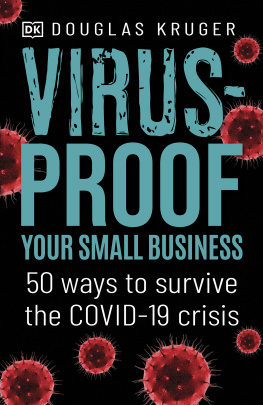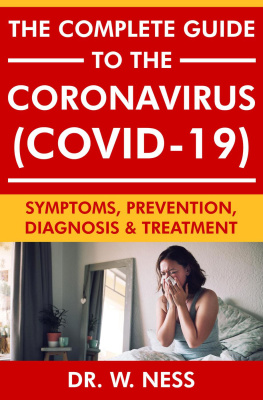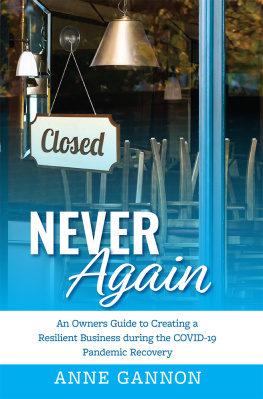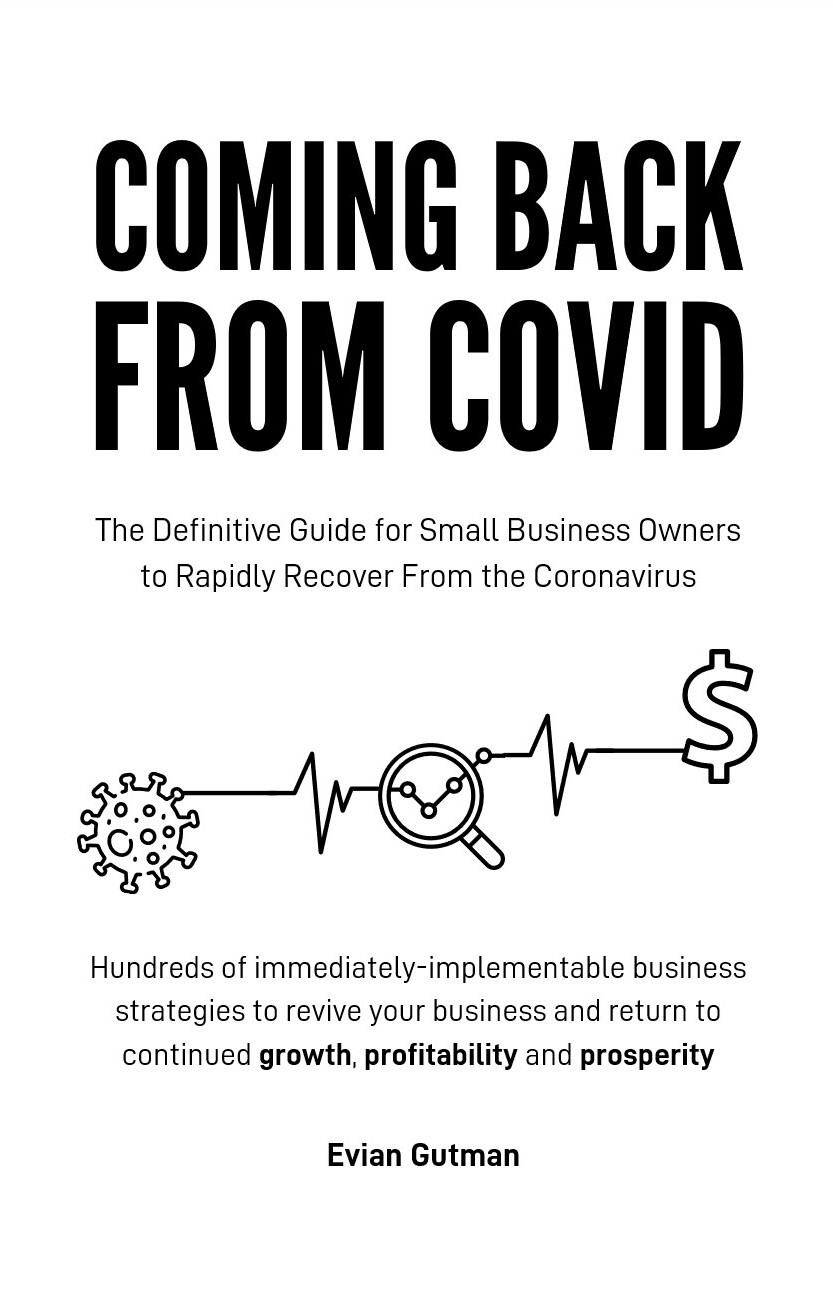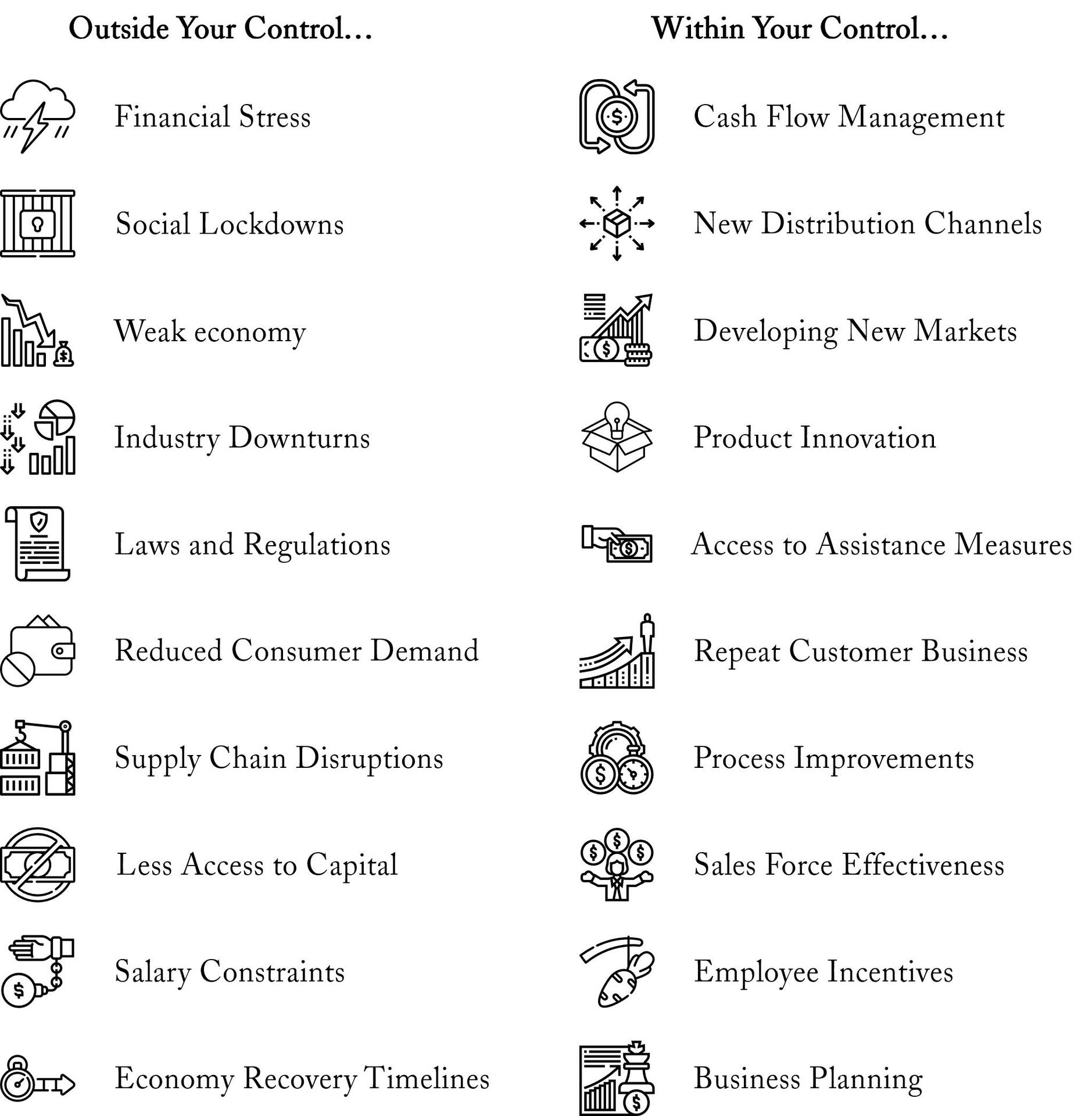Copyright 2020 Evian Gutman
All Rights Reserved
This book is dedicated to healthcare workers the world over. Your unrelenting commitment to patient care helped us get through the pandemiceven when coming at great personal sacrifice.
Thank you.
CONTENTS
PREFACE
W hen the Coronavirus virus first reared its ugly head towards the end of 2019, it was initially contemplated with an abstract fascination as a phenomenon taking grip in lands far away.
In our thinking at the time, we remembered that wed experienced all this before SARS in 2002. Swine Flu in 2009. Ebola in 2014.
Except, we hadnt.
With its calamitous speed of infectious spread coupled with its high mortality rate; COVID-19 wreaked havoc across the globeimpacting every facet of life as we knew it and leaving none unaffected.
Health implications were naturally priority number onetaking care of yourself, your loved ones and society at large was the first order of affairs. With so many unknowns, and no vaccine at hand, uncertainty in how best to respond took afoot.
As if out of a textbook, the world looked as though it was going through the seven stages of grief: shock , denial , anger , bargaining , depression , testing ; and then finally, acceptance .
But what had we come to accept?
We accepted that societal norms were no longer what they once were: maintaining a social distance of six feet between yourself and others was now the new normal.
We accepted that consumer expectations were shaped by forces greater than simple market demand: no longer could you just go to the supermarket and expect to find toilet paper on the shelves.
We accepted that civil liberties were not absolute: being locked down in your home and forbidden from leaving might be a justifiable trade-off for the public good of flattening the curve.
We accepted that working arrangements were largely a legacy of convention: working from home and teleconferencing technologies could prove equally effective in fulfilling many day-to-day tasks.
And importantly, we accepted the fragility of the assumptions upon which many small businesses were built: the flaws in assuming that prior circumstances were reliable indicators of future prosperity.
Small businesses started to quickly feel the pinch. Money flowed out faster than it flowed in. Operations slowed down as demand evaporated, and funds to pay salaries dried up at similar speeds. Customers disappeared, and those that remained had less money to spend. COVID regulations were introduced that literally separated businesses from their customers.
Many good businesses that had weathered prior storms suddenly found themselves in the eye of a tornado with no escape plan in sight. Even as restrictions lightened, scar tissue from these impacts added salt to the wound.
COVID upended entire economies, industries, supply chains, consumer behaviors and finances in ways that prevented a return to business-as-usual and life as it was once known. Pressures on small business owners became heavy and immense.
Working within this reality, its tempting to put ones hands up in the air and simply throw in the towel. After all, most of these impacts are a consequence of externalities that were outside your controlnot a function of your business potential or stewardship.
However, do not discount the control you still maintain for running a high-performing and profitable business. As Winston Churchill famously said
Never let a good crisis go to waste.
The coronavirus is a crisis you did not invite. It resulted in consequences you do not want. It threw into question many past recipes for success.
Yet the silver lining is that this crisis represents an opportunity to step-up your game. It represents a chance to address all the imperfections in your business that youve continually avoided up till now. Now is the time to revisit old assumptions and see if theres a better way of doing things. This unique moment represents an excuse to consider previously non-existent opportunities that align with new operating realities.
Many things are outside your control, but many things still remain within your control too
Now is the time to recalibrate focus from crisis management to business re-building .
The business owners most likely to succeed will be those that are looking towards the horizon and preparing for this voyage.
Whilst COVID-19 was the crisis that nobody asked for, it stands to become the trigger for your future growth, profitability and prosperity.
For adversity is simply opportunity , in disguise.
HOW TO USE THIS BOOK
E mbarking on your post-COVID recovery is a daunting task.
The last time you had this many challenges hovering above your head may have been when you first started your business.
The bad news is, theres a lot to get right. The good news is, theres a lot to get right!
This book is your starting point for that journey. It contains a collection of hig h- impact, immediately-actionable strategies, tips and techniques for recovering your business from the impacts of COVID.
The book is broken down into six chapters:
Each chapter contains five initiatives, and each initiative is broken down further into ten practical tips for bringing each to life.
All businesses differ in a multitude of ways. Different businesses of different sizes exist in different places and at different stages of their organizational maturity. Inevitably, some tips will be more pertinent for your business than others.
The goal in using this book is to build yourself a recovery roadmap via a broad range of business initiatives. Each of these will require a dose of individual color and context to bring them to life, that reflect your unique operating realities.
Keep a notepad alongside you as you read through the book. Jot down ideas that come to you as you flick through the chapters, and bounce your ideas off others within your team too.
And when you feel overwhelmed by just how much there is to get right, remind yourself once again, of just how much there is, to get right!
MARKETING AND SALES
Understand Your New Customers With Buyer Personas
S ales represent the engine of your business, and the ability to make sales hinges on the value you provide to your customers. But who is your customer ? And what do we actually mean by value ?
Firstly, there is no generic customer.
There is Bob the dentist, with three kids, a mortgage, who enjoys sailing on weekends. There is Lucy the grandmother, who depends on her pension and likes Italian food. And there is Arthur the student, who lives at home with his parents and is saving his money to buy a popular video game.
Each of these customers have distinct backgrounds, personalities and interests. The combination of these defining attributes shape how effectively a given marketing message will resonate with them and when their personal buying drivers get activated.
Thinking about a generic customer for your marketing and sales efforts through a one-size-fits-all prism runs the risk of diluting these nuances that can be the difference between customers buying or not.


